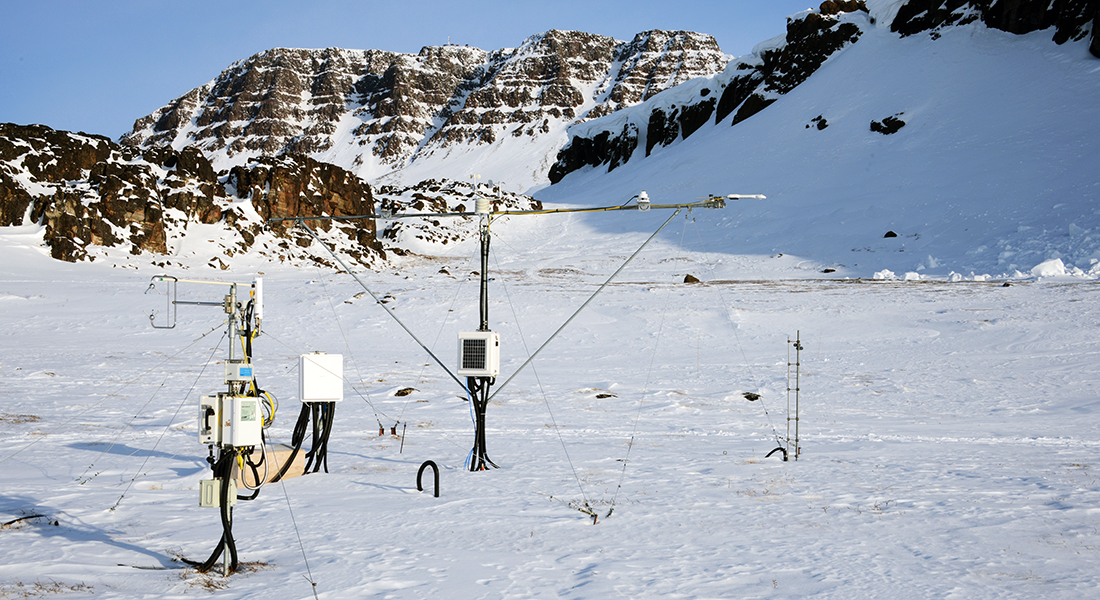Winter Arctic Carbon Emissions: an important component of the year-round carbon budget
Arctic regions are a sink for carbon (C) during warm periods, when carbon captured by plants exceeds the carbon loss due to ecosystem respiration. With the projected warming of the Arctic it remains unclear if Arctic ecosystems will function as a net sink or source of atmospheric CO2. As the Arctic winter has long been less studied than the growing season, a more accurate annual C budget for the Arctic region relies on the inclusion of winter C measurements.

Various studies have previously shown that the long, dark winter season is difficult to measure but represent an important component of the annual C budget and likely contributes approximately 20-30% of the annual C budget. A new large-scale study published in Nature Climate Change integrates and summarizes new and previously published observations from 100 sites across the Arctic and concludes that the order of magnitude of winter CO2 emissions from Arctic soil is consistently high across all sites and is mainly controlled by winter temperatures, vegetation types and snow conditions. The latter is an important factor controlling the subsurface temperature regimes in soil, and thereby highly influence soil subsurface respiration during the winter period.
The current study provides a baseline for winter CO2 emissions from 2003-2017 and conclude that winter emissions have not significantly increased during that period. Upscaling observations to model emissions in space and time across the entire Arctic region and in the future are important but still limited by a lack of understanding of the variability factors controlling winter emissions – not the least the deposition and redistribution of snow.
Given the rapid pace of warming in the Arctic there is an urgent need to expand monitoring networks and to tightly link these observations to models to help guide decision making
The study also warns that Arctic winter C emissions (as CO2) could increase in the future due to a warming of the Arctic. The results indicate that enhanced winter soil CO2 emissions may even offset the plant carbon uptake during the growing season. It remains an open question to what extent the winter CO2 emissions originate from a thawing permafrost zone or a faster turnover of soil organic carbon in surface layers.
This study was supported by NASA ABoVE and conducted in coordination with the Permafrost Carbon Network and more than 50 collaborating institutions and centres including Center for Permafrost (CENPERM) at University of Copenhagen funded by the Danish National Research Foundation.
Contact
Bo Elberling
Phon: +45 23638453
Email : be@ign.ku.dk
for questions or comments.
